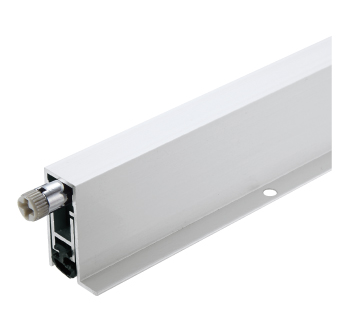Ultimate soundproof door sealing method
10/28/2024

MFAC / MSAC
Soundproof doors typically have seals installed between the door frame and the door. By using a handle like a Gremlin handle to compress the seal, gaps are eliminated, achieving airtightness.
Seals are often made from materials like rubber, sponge, or silicone, but they tend to deteriorate over time due to frequent use and aging.
Frequent opening and closing of the door can weaken the resilience of the seals, causing them to deform or tear. When this happens, the soundproofing effectiveness of the door is compromised.
The soundproofing effectiveness of the seals themselves is also lower compared to the main body of the door.
Are there alternative sealing methods that can replace the seals?
Our company have two methods in mind
1. Eliminate the seals entirely
This technology is a company secret, so we can’t provide details, but there is a design method that maintains the soundproofing effectiveness of a soundproof door even without seals.
Flat sill soundproof door
https://anechoic-room.com/techint/flat-sill-soundproof-door/
This is our original soundproof door. There is no floor height difference (threshold) present.

Those knowledgeable about design might assume that a door bottom is being used, but we are not using one.
A door bottom is a component used in doors such as those found in movie theaters.
When the door closes, a button on the door frame makes contact, compressing the button and activating a spring inside the door bottom, which extends the rubber seal to fill the gap with the floor.
However, the door bottom has several issues, which are the reasons why we do not use it. There is unevenness in the sealing effectiveness of the seals.
Due to the characteristics of the spring, force may not be applied vertically and uniformly against the floor, which can result in uneven sealing.
Low soundproofing effectiveness
While it may be usable in a basic soundproof room, the mechanism can create gasps and voids around the seals, resulting in inherently low soundproofing effectiveness of the door bottom itself.
While the specific of how we achieve the flat sill structure are a company secret, we have many successful implements.
2. Metal Touch
Metal touch refers to the contact between two metal surfaces. In other words, it means filling the gap with metal instead of using seals.
Compared to seals, metal is hard and strong, making it less prone to issues like deformation. While we refer to it as Metal Touch, I believe materials like nylon or rigid plastics can also be effective.
However, to fill gaps with Metal Touch, a high degree of dimensional accuracy and on- site adjustments are required. If the dimensional accuracy is low, gaps will form, allowing sound to pass through. Additionally, adjusting the doors alignment and level during installation can be quite challenging.
So, how do we design it to make it practically usable? That’s also a company secret.
( We apologize for that.)
Two points represent the ultimate sealing methods for soundproof doors that we currently consider as alternatives to seals.